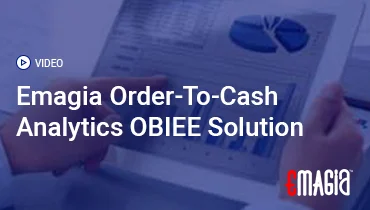The world of finance is constantly evolving, and for businesses of all sizes, managing the flow of money is paramount. A crucial, yet often overlooked, part of this financial lifecycle is the cash application process. At its core, this is where the puzzle pieces of payments and invoices are matched, ensuring your books are accurate and your cash flow is healthy. This extensive guide will delve into the intricacies of this process, with a special focus on the often-complex task of invoice processing. We will explore everything from the foundational definitions to the cutting-edge technologies that are transforming the field.
A Deeper Look at the Order to Cash Process Flow
To truly appreciate the significance of invoice processing and cash application, we must first understand the broader context of the Order to Cash (O2C) process flow. This is the complete lifecycle of a sale, from the moment a customer places an order to the final application of their payment. It’s a journey that touches multiple departments and systems within an organization. A seamless order to cash process steps ensures a business operates smoothly, maintains strong customer relationships, and achieves financial stability.
What is Cash Application? The Foundational Concept
Before we dive into the details, let’s clearly define our terms. So, what is cash application? It’s the critical accounting function of accurately applying incoming payments to the correct customer accounts and outstanding invoices. Think of it as the final, and most crucial, step in the invoice to cash process. When a customer sends money, the cash application team is responsible for figuring out exactly which invoices that payment is meant to cover. This is a vital task that directly impacts a company’s financial health, from the accuracy of its accounts receivable to its overall cash flow management.
A proper cash application process is the backbone of a successful accounts receivable department. Without it, you could have a significant amount of unapplied cash—money sitting in your bank account that hasn’t been matched to an invoice. This creates a host of problems, from inflated Days Sales Outstanding (DSO) to a lack of visibility into your true financial position.
The Central Role of Invoice Processing
Invoice processing is the engine that drives a successful cash application process cycle. It’s the moment when a received payment is meticulously matched to a specific, corresponding invoice. This isn’t always a straightforward task. Payments can come in various forms, from traditional checks to electronic transfers, often without clear, corresponding remittance documents. This is where the detective work begins.
The core of this process is taking the payment and its accompanying data—known as remittance advice—and reconciling it with your system’s open invoices. A single payment might cover a single invoice, or it might be a bulk payment for dozens of invoices. The complexity multiplies with deductions, short payments, or overpayments. An efficient accounts receivable cash application function hinges on how well a team can handle these varied scenarios.
Unpacking the Cash Application Process: A Step-by-Step Breakdown
The cash applications process can be broken down into a series of key steps, which, when performed correctly, ensure a smooth and accurate reconciliation.
- Receive Payments: This is the first step. Payments can arrive through numerous channels, including physical checks, Automated Clearing House (ACH) transfers, wire transfers, and credit card payments.
- Gather Remittance Data: This involves collecting the information that explains what the payment is for. For checks, this might be a physical stub. For electronic payments, it could be an email, a file from an online portal, or a line in a bank statement. This is often where the first challenge arises, as this data is frequently incomplete or sent separately from the payment itself.
- Match Payments to Invoices: This is the heart of the cash apps process. Using the remittance advice, the team matches the payment amount to one or more outstanding invoices in the accounts receivable ledger. This step requires a keen eye for detail, especially when dealing with partial payments or consolidated invoices.
- Handle Exceptions: In a perfect world, every payment would match an invoice exactly. In reality, exceptions are common. This could be a short payment due to a discount, a deduction for a return, or simply a missing invoice number. A defined process for handling these exceptions is critical for keeping the workflow moving.
- Post Payments: Once the match is confirmed and any exceptions are resolved, the payment is officially posted to the customer’s account in the accounting system or ERP. This updates the accounts receivable cash application ledger, marking the invoice as paid.
- Reconcile and Review: Finally, the team reconciles the recorded payments with the bank statements to ensure everything aligns perfectly. This is a crucial control step that identifies any lingering discrepancies.
The Importance of Cash Application in the O2C Cycle
As a critical part of the O2C cycle in SAP with accounting entries or any other ERP, cash application is far more than a simple data-entry task. It’s a strategic function that provides real-time visibility into a company’s financial health. An efficient process leads to:
- Improved Cash Flow Management: Accurate and timely cash application allows a business to see its true cash position, enabling better forecasting and decision-making.
- Lower Days Sales Outstanding (DSO): By quickly applying payments, you reduce the time it takes to convert sales into cash. This is a key performance indicator (KPI) for a healthy business.
- Reduced Human Error: Manual cash application accounting is prone to mistakes, which can lead to misapplied payments, customer disputes, and a longer financial close process.
- Enhanced Customer Experience: When payments are posted promptly and accurately, customers see their balances updated quickly, leading to better trust and stronger relationships. A well-managed collection process in o2c is a key part of this.
The Evolution of Invoice to Cash Process
The traditional invoice to cash process has undergone a significant transformation. Historically, it was a manual, paper-intensive endeavor. Invoices were printed and mailed, payments came in the form of checks, and a team of specialists manually matched each payment to a corresponding invoice. This manual cash application management process was slow, expensive, and prone to errors.
Today, the modern invoice 2 cash cycle is largely digital. Invoices are sent electronically, and payments are increasingly made via digital channels. This shift has paved the way for automated and AI-driven solutions that are revolutionizing the way companies manage their receivables.
The Role of Technology: The Rise of AI-Powered Cash Application
The manual cash apps process is a relic of the past for many forward-thinking organizations. The sheer volume and variety of modern payments, coupled with inconsistent remittance advice, make manual matching nearly impossible to scale. This is where AI-powered cash application comes in.
An ai powered cash application process uses advanced technologies like machine learning (ML) and natural language processing (NLP) to automate the entire workflow. The system can automatically ingest data from various sources—bank files, email attachments, payment portals—and use intelligent algorithms to match payments to invoices with a high degree of accuracy. It learns from historical payment patterns and customer behavior, becoming smarter over time.
This technology can handle complex scenarios, such as bulk payments covering multiple invoices, and even suggest matches when remittance information is incomplete. This drastically reduces the number of exceptions that require human intervention, freeing up the accounts receivable team to focus on more strategic, high-value tasks.
A Closer Look at an AI-Powered Cash Application Process
- Intelligent Data Ingestion: The system automatically pulls payment and remittance data from all sources—bank statements, lockboxes, emails, and online portals. It uses optical character recognition (OCR) and NLP to read and understand both structured and unstructured data.
- Automated Matching Algorithms: This is the core of the AI system. The algorithm uses a combination of pre-defined rules, historical payment data, and predictive logic to match payments to open invoices. It can apply a single payment to many invoices or vice versa, based on the data it has.
- Exception Handling Workflow: When a match can’t be made with certainty, the system flags it as an exception. Instead of leaving it as unapplied cash, it routes the exception to the appropriate specialist with all the necessary information, enabling a quick and efficient resolution.
- Continuous Learning: The AI system learns from every interaction. When a user manually corrects a match, the system incorporates that new information, refining its logic for future transactions. This self-learning capability makes the system more accurate and efficient over time.
The Financial Management on Cash Application
In the competitive landscape of financial technology, companies like Emagia are making a name for themselves. When you evaluate the financial management company Emagia on cash application, you’ll find their solution focuses on providing real-time, AI-driven insights to manage treasury and cash flow. Emagia leverages AI to automate receivables, matching incoming payments to open invoices using intelligent pattern recognition and machine learning. This approach aims to reduce Days Sales Outstanding (DSO) by providing real-time visibility into which invoices are missing or have been paid. The platform integrates with multiple systems, from ERPs to banks and payment processors, centralizing cash data to streamline the cash application process and reconciliation.
How Emagia Elevates the Order-to-Cash Cycle
Emagia is a leader in the digital finance space, offering a comprehensive suite of AI-powered solutions to transform the order to cash means and other financial processes. For cash application, Emagia’s platform goes beyond simple automation. It provides an intelligent, self-learning solution that can handle the most complex remittance scenarios with high accuracy. The platform centralizes data from all payment channels, including lockboxes, bank files, and email remittances, and uses AI to perform automatic matching. It also provides a robust exception management dashboard, giving teams the tools they need to resolve discrepancies quickly. By leveraging Emagia, businesses can dramatically reduce manual effort, lower operational costs, and gain real-time visibility into their receivables, ultimately accelerating their cash flow and improving their financial agility.
Frequently Asked Questions about Invoice Processing in Cash Application
What is cash application in accounting?
In accounting, cash application is the process of precisely matching and applying incoming customer payments to the corresponding invoices and accounts receivable ledger. It is a fundamental step in the revenue cycle.
What is a cash application?
A cash application is the software or process used to reconcile customer payments with the invoices they are intended to pay. It’s a vital part of the accounts receivable function.
What is cash application in o2c?
In the Order-to-Cash (O2C) cycle, cash application is the final and most critical step. It’s where the received cash is applied to a customer’s outstanding balance, effectively closing the sales cycle for a particular transaction.
What are cash applications?
The term cash applications refers to the broader set of processes, tools, and people involved in the cash application function within a company’s accounts receivable department. These are the systems that ensure payments are allocated correctly.
What is a cash application dashboard?
A cash application dashboard is a visual interface that provides a real-time overview of key metrics related to the cash application process. This can include match rates, unapplied cash aging, and the volume of payments processed. It helps managers and teams monitor performance and identify bottlenecks.
What are cash calls?
In the context of some industries, a cash call refers to a request for funds from a partner, investor, or venture to cover specific expenses or to meet a financial obligation. This is different from the cash application process where a company is applying cash received from a customer for an invoice.
What is the order to cash process steps?
The Order to Cash process typically includes: 1) Order entry, 2) Order fulfillment, 3) Invoicing, 4) Cash application, and 5) Collections. Each step is a vital link in the chain that ensures a company receives payment for goods or services rendered.
What is the o2c process?
The O2C process (Order-to-Cash) is the entire cycle of activities that a business undertakes to sell a product or service and collect the revenue from that sale.
How do I define cash call?
A cash call is a formal request from a joint venture or partnership to its members to contribute additional capital to fund operations or a specific project.
How do I evaluate the financial management company Emagia on cash application?
To evaluate a company like Emagia, you should consider several factors: its integration capabilities with your existing ERP and banking systems, the accuracy of its AI-powered matching algorithms, the level of automation it provides for exception handling, its reporting and analytics features, and its overall impact on key metrics like DSO and unapplied cash.



